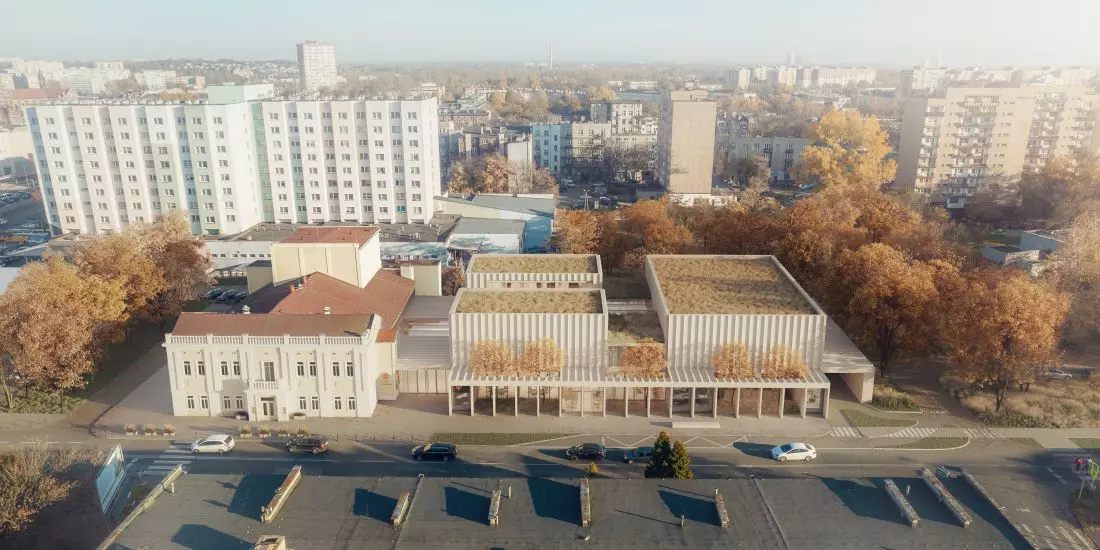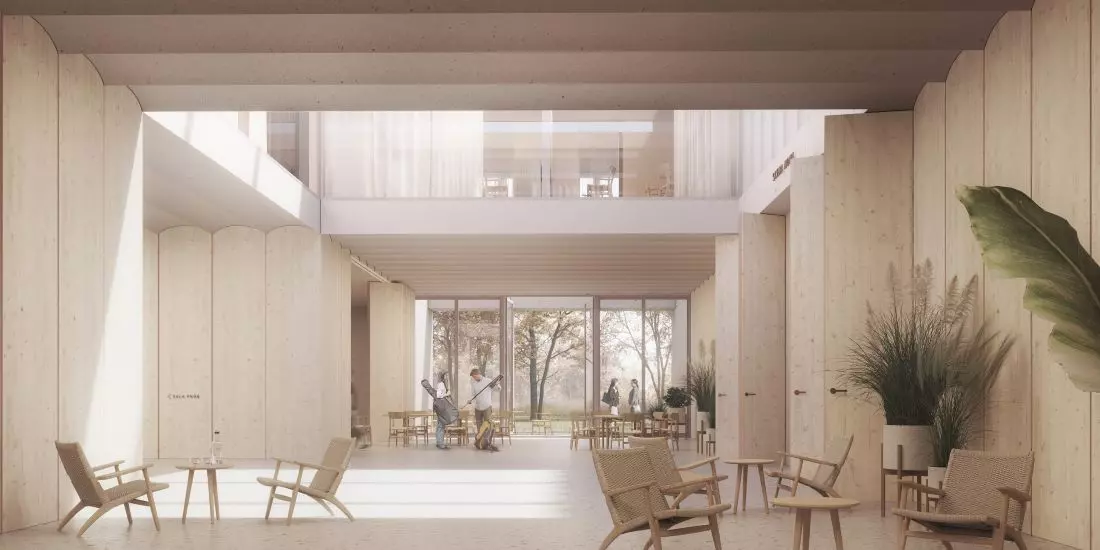Modern theater buildings must not only create a place where performances take place, but also create an open and activating space. The challenge for architects is becoming a combination of different functions. What should contemporary theater architecture contain?
In a competition organized by the Katowice branch of SARP, the P2PA architectural studio received an honorable mention for developing an urban-architectural concept for the expansion. The goals of the competition were to create a unique block that will become a symbol of the city and create a place that is accessible and attractive to the residents of the city and the region.
new space
The studio's goal was to expand the Zagłębie Theater based on respect for the historic building. The designers assumed the restoration of the historic form of the building, along with the preservation of the storage space. The facade was to be restored to its 1940s condition. The remainder of the buildings would be eliminated to authenticate the tripartite body with the division into a classical stage, a new stage and the space between them.
Bird's eye view visualization of the new Zagłębie Theater building in Sosnowiec
© P2PA
Thecenter of the new complex is the axis between the classical stage, located in the historic building, and the new stage. Between the two, two transverse spaces have been created, opening onto Teatralna Street and the park. They locate the main entrance, technical entrance, education zone and bistro. Large folding glazing allows the space to connect to a green clearing and create a summer stage. The open structure of the building inspires and allows the use of non-theatrical spaces for performance purposes - going beyond the stage.
Visualization of the new Zagłębie Theater building in Sosnowiec
© P2PA
The lump of the building tries to refer to the symbolism of the curtain - the element that determines order in a theatrical performance. This is evident in the facade of the modern part of the theater, where the wavy front resembles the material of the curtain.
Maciej Poplawski , an architect from the P2PA studio, will talk about the project:
Wiktor Bochenek: Modern theaters are radically different from classical solutions. What was important in designing a modern theater building?
Maciej Poplawski: We were guided by the idea of openness of the theater, which goes out of its classical framework becoming, in a way, an activating center of culture. In our interpretation, the theater ceases to be associated with palatial splendor and formal elegance, and becomes a place full of life, inspiring and inviting a wide range of residents to be active and involved more than just attending a performance. It was important for us to provide a multifunctional space that will give new opportunities to create theatrical illusion and become a place always open to residents.
Visualization of the new Zagłębie Theater building in Sosnowiec - interior
© P2PA
Wiktor Bochenek: How did you try to combine the historic building with the new architecture?
Maciej Poplawski: Our proposed expansion of the Zagłębie Theater was designed based on respect for the historic building. We assumed the restoration of the appearance of the facade from the 1940s, as well as the cleansing of the body of the building from the elements added over the years, thus authenticating its tripartite division. The layout of the designed building was determined by the outer edges of the historic theater. The rhythm of the volumes was created as a double repetition of the simplified form of the Classical Stage. Closer to the existing building we located the nodal functions, and at the close of the axis we located the New Stage providing a counterpoint to the Classical Stage. Between the elements, two transverse spaces were created, opening onto Theater Street and the park. The expansion structure created in this way was intended to activate the historic Classical Stage building, which is a testimony to the history of the Zagłębie Theater.
drawing showing the connection of the theater hall
© P2PA
Wiktor Bochenek: How was the space in the building divided?
Maciej Poplawski: We wanted a clear division of the newly designed body, which would clearly shape the functional layout of the building. On the side of the historic building a cut block of nodal functions was located, and at the close of the layout the New Stage. On the first floor are located zones intended for direct contact with the user of the building striving for maximum openness and activation of the first floor. The spectator has direct, barrier-free access to the Classical Stage, the New Stage, the rehearsal rooms and other rooms of the Spectator Zone. In each of the 3 designed blocks, communication risers consisting of passenger lifts and staircases were located, which ensured good communication between the functions located on the first floor and the higher floors. The second floor houses the nodal functions of the artistic zone - dressing rooms and hairdressing studios, as well as the administration zone. The +2 floor was designed only within the contour of the basic blocks locating on it guest rooms and part of the administration offices. The underground floors house a garage, a small foyer for guests with access to toilets and checkrooms, as well as functions of the technical zone.
drawing showing the combination of the old and new masses
© P2PA
Wiktor Bochenek: You refer to the symbolism of the curtain, how was this adapted in the design?
Maciej Poplawski: The object refers in a non-obvious way to the characteristic element of theater, which is the curtain. In theater, its opening is a symbolic invitation to the audience to participate in the performance. The barrier between the viewer and the artist ceases to exist. In the designed building, raising the curtain is an analogous architectural gesture, allowing the hitherto hidden reality to connect with the outside world. This reference is evident both in the way we think about the structure of the building and in the detail of its facade.
Wiktor Bochenek: What was the most difficult, and what are you most proud of?
Maciej Poplawski: In each of our projects we try to find an idea that will create a clear base for the whole concept. When looking for a starting point, we balance between many factors trying to achieve a solution that provides stability and harmony in the context of each of them. In the Zagłębie Theater project, elements such as the historic site, the street, the park and the axis of culture were the most important for us. The most important, and at the same time the most difficult, task was to develop a common den ominator that would connect these elements. In our project, this denominator is openness, which finds its direct manifestation in the previously mentioned gesture of opening the curtain.
Wiktor Bochenek:Thank you for the interview.

































